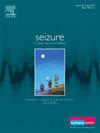Predicting antiseizure medication response in newly diagnosed epilepsy using quantitative EEG and machine learning
IF 2.7
3区 医学
Q2 CLINICAL NEUROLOGY
引用次数: 0
Abstract
Background
Predicting long-term outcomes in newly diagnosed epilepsy remains limited by reliance on clinical features and visual EEG interpretation. Machine learning enhances this potential by identifying complex patterns in EEG data, as demonstrated in studies on predicting surgical outcomes and seizure initiation. However, its application to predicting ASM response in newly diagnosed epilepsy has been underexplored. This study aimed to develop a machine learning model to predict ASM response in newly diagnosed epilepsy patients, with the goal of improving personalized treatment strategies and early identification of drug resistance.
Methods
This retrospective cohort study included adult patients with a new epilepsy diagnosis who underwent EEG prior to ASM initiation. Patients with structural brain lesions on MRI were excluded. Seizure control was assessed two years after starting ASM treatment, with responders defined as those achieving at least one year of seizure freedom during the second year. We applied three prediction approaches: one using only clinical variables, another using only EEG features, and a third integrating both clinical and EEG data. For each approach, Logistic Regression, Extreme Gradient Boosting (XGBoost) and Random Forest models were implemented to assess predictive performance and suitability for ASM response prediction. Model performance was evaluated at both epoch and patient levels, with patient-level predictions generated by averaging class probabilities across epochs.
Results
This study included 94 patients with newly diagnosed epilepsy who received EEG before starting ASM treatment, of whom 77 (81.9%) achieved seizure freedom. Machine learning models using clinical features showed moderate predictive performance, with the XGBoost model achieving the highest AUROC of 0.69. For EEG features, patient-level predictions improved model performance, with the Random Forest model achieving an AUROC of 0.68. The combined clinical-EEG model significantly enhanced accuracy, with Random Forest model achieving the best performance (AUROC: 0.81). Among EEG features, power spectral density (PSD) in the beta and gamma bands, along with sample entropy, were identified as the most predictive of treatment response.
Conclusion
Quantitative EEG analysis using machine learning shows significant potential in predicting the long-term prognosis of newly diagnosed epilepsy, even in patients without structural brain lesions or visually abnormal background EEGs. By integrating clinical variables with quantitative EEG features, these machine learning models demonstrate potential to support individualized treatment planning and the early identification of drug resistance. However, further validation in larger and diverse populations is needed before clinical implementation.
应用定量脑电图和机器学习预测新诊断癫痫的抗癫痫药物反应
背景:预测新诊断癫痫的长期预后仍然受到临床特征和视觉脑电图解释的限制。机器学习通过识别脑电图数据中的复杂模式来增强这种潜力,正如预测手术结果和癫痫发作的研究所证明的那样。然而,它在预测新诊断癫痫的ASM反应方面的应用尚未得到充分的探索。本研究旨在开发一种机器学习模型来预测新诊断癫痫患者的ASM反应,以改进个性化治疗策略和早期发现耐药性。方法本回顾性队列研究纳入了在ASM开始前进行脑电图检查的新诊断癫痫的成年患者。排除MRI上有脑结构性病变的患者。癫痫控制在开始ASM治疗两年后进行评估,反应者定义为在第二年实现至少一年的癫痫发作自由。我们采用了三种预测方法:一种仅使用临床变量,另一种仅使用脑电图特征,第三种结合临床和脑电图数据。对于每种方法,采用逻辑回归、极端梯度增强(XGBoost)和随机森林模型来评估预测性能和ASM响应预测的适用性。模型的性能在epoch和患者水平上进行评估,患者水平的预测是通过平均每个epoch的分类概率来产生的。结果94例新诊断癫痫患者在开始ASM治疗前接受脑电图,其中77例(81.9%)癫痫发作自由。使用临床特征的机器学习模型表现出中等的预测性能,其中XGBoost模型的AUROC最高,为0.69。对于脑电图特征,患者水平的预测提高了模型的性能,随机森林模型的AUROC为0.68。临床-脑电联合模型显著提高了准确率,其中随机森林模型的准确率最高(AUROC: 0.81)。在脑电图特征中,β和γ波段的功率谱密度(PSD)以及样本熵被认为是最能预测治疗反应的特征。结论应用机器学习的定量脑电图分析在预测新诊断癫痫患者的长期预后方面具有重要的潜力,即使在没有结构性脑损伤或视觉背景脑电图异常的患者中也是如此。通过将临床变量与定量脑电图特征相结合,这些机器学习模型显示出支持个性化治疗计划和早期耐药性识别的潜力。然而,在临床应用之前,需要在更大和不同的人群中进一步验证。
本文章由计算机程序翻译,如有差异,请以英文原文为准。
求助全文
约1分钟内获得全文
求助全文
来源期刊

Seizure-European Journal of Epilepsy
医学-临床神经学
CiteScore
5.60
自引率
6.70%
发文量
231
审稿时长
34 days
期刊介绍:
Seizure - European Journal of Epilepsy is an international journal owned by Epilepsy Action (the largest member led epilepsy organisation in the UK). It provides a forum for papers on all topics related to epilepsy and seizure disorders.
 求助内容:
求助内容: 应助结果提醒方式:
应助结果提醒方式:


